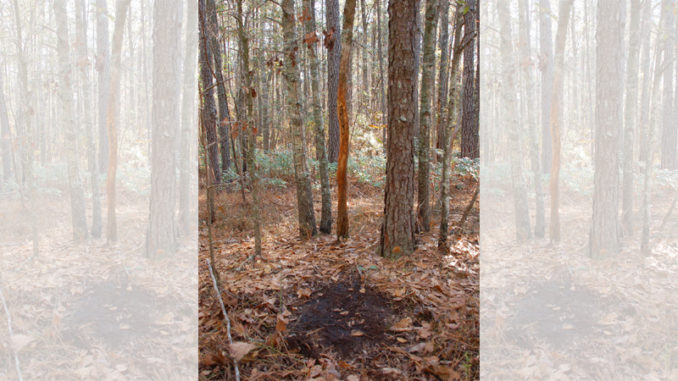
What do early season rubs, scrapes and tracks really mean to Carolina deer hunters? If you understand the markers that deer leave behind, you’re a leg up on putting venison in the freezer.
With deer season cranking up, hunters are preparing food plots, erecting stands and making plans for a productive season. And that includes plenty of venison for the freezer and high hopes of something to send to the taxidermist.
The first attempts at breeding by whitetails will begin in the Carolinas in late September. Hunters will begin to see a wave of rubs and scrapes around their hunting properties. They can learn a tremendous amount from tracks, scrapes and rubs. But how much can you really take from physical markers. And how much can hunters use to get a big buck in range?
Even though deer lack a highly developed language, they are social animals. Communication is just as important as finding the next food plot bustling with protein-enriched groceries. Within their social hierarchies, animals communicate daily in one form or another to establish dominance and develop relationships during the breeding season. Deer communicate more than by just a few verbal grunts, bleats and snorts. They make and use scrapes and rubs to communicate between and within sexes.
According to Jonathan Shaw, the deer biologist for the N.C. Wildlife Resources Commission, scrapes and rubs are critically-important for deer during the breeding season, and hunters can learn from the presence of these features.
“Scrapes and rubs are a way deer of all ages and sexes can communicate,” Shaw said. “A scrape is where bucks paw the ground, and rubs are primarily used to remove velvet from antlers. But deer are leaving scent markers when these features are created.”
Deer use scents to communicate with each other
Deer primarily use scents to communicate between sexes and between age classes among males. Bucks will establish social hierarchies. And scent markers left at an overhanging branch or on a 4-inch cedar tree are good places to signal their presence to other males in the area.
Scrapes and rubs are easy to distinguish. Deer rub the base of their antlers against the base of a sapling or small tree, removing some of the bark and the inner cambium layer of a tree. The rub will be visible to other deer. And the buck will also deposit scent on the tree from his forehead gland. This leaves an indicator for other bucks in the area.
Scrapes are places where deer paw away the ground cover all the way to the dirt, usually under an overhanging limb or branch on which they chew. Bucks get the opportunity to deposit odor from saliva and several different glands on their forehead, between their toes and from the tarsal glands on the insides of their hind legs. Bucks will urinate on their tarsal glands to deposit scent into the scrape.
“Does will use these scrapes to investigate the bucks in the area and also to communicate with the bucks when they are sexually receptive,” Shaw said.
Deer learn a lot from scents left behind by other deer
Not only can deer detect odors at great distances, they get a message from the specific odor profile. For hunters, these scent stations provide a place to encounter many of the deer in the area, especially the mature animals participating in breeding behaviors.
The size of the scrapes and rubs may not tell much about the size of the participating deer as once thought.
According to Shaw, bucks of all age classes will use scrapes and existing rubs. Bucks of all ages will rub big and small trees. While it usually takes a stronger animal to rub large, denser trees, it doesn’t always mean it is the dominant, mature buck in the area frequenting the rub.
“A big rub can be an existing rub from prior years, and it doesn’t always mean the big buck that made the rub is still around. The best way for deer to communicate is to use what already exists versus creating a new feature,” he said.
Typically, bucks will create rubs in their core areas to establish their territories and make other bucks in the area aware of their presence. Rubs will be anywhere in their core region, especially around major food sources and bedding areas.
Without seeing it in person, the best way to determine if a big buck is using the area is his tracks. A heavy deer will make deeper impressions than a lighter, younger deer. And older deer will have significant wear on their hooves. The tips will be worn down and leave a more blunt impression. Older does will have similar blunt-tipped tracks but will lack the deep impressions. That’s because they rarely weigh more than 150 pounds.
Deer will begin leaving rubs and scrapes long before peak breeding season
Hunters in the Carolinas will begin to see rubs and scrapes in September — even in August — even though peak breeding doesn’t occur until October and November. The first scrapes and rubs are often thought to have been made by deer of a certain age. But little information can be gained from these initial and premature signs of activity.
“The first rubs and scrapes of the season are a sign of individual variation and not necessarily from immature or the older, mature bucks starting early,” Shaw said.
As the breeding season nears, more does become sexually receptive. And the bucks will stay on their hooves trying to get in the action. Bucks initially establish their territory in certain areas. But they will usually move to the areas with the highest doe concentrations as breeding nears. Does don’t make scrapes. But they will immediately use established scrapes to communicate with bucks when they become sexually receptive.
The presence of heavy tracks and numerous new rubs and scrapes in their hunting area is a good sign for hunters. An active communication post near or in their hunting areas is a real confidence-builder. There will never be a foolproof formula to get a mature buck in range during daylight hours. But the presence of consistent, fresh, buck activity around the stand is a good place to start and end the day.
Click here to read about hunting deer in unlikely areas.

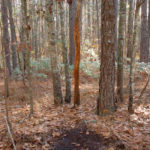
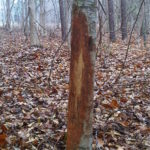
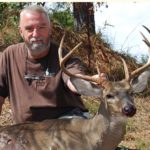


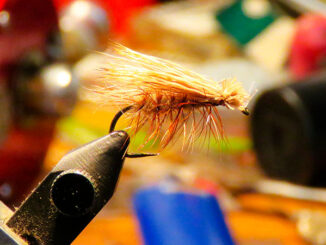

Be the first to comment